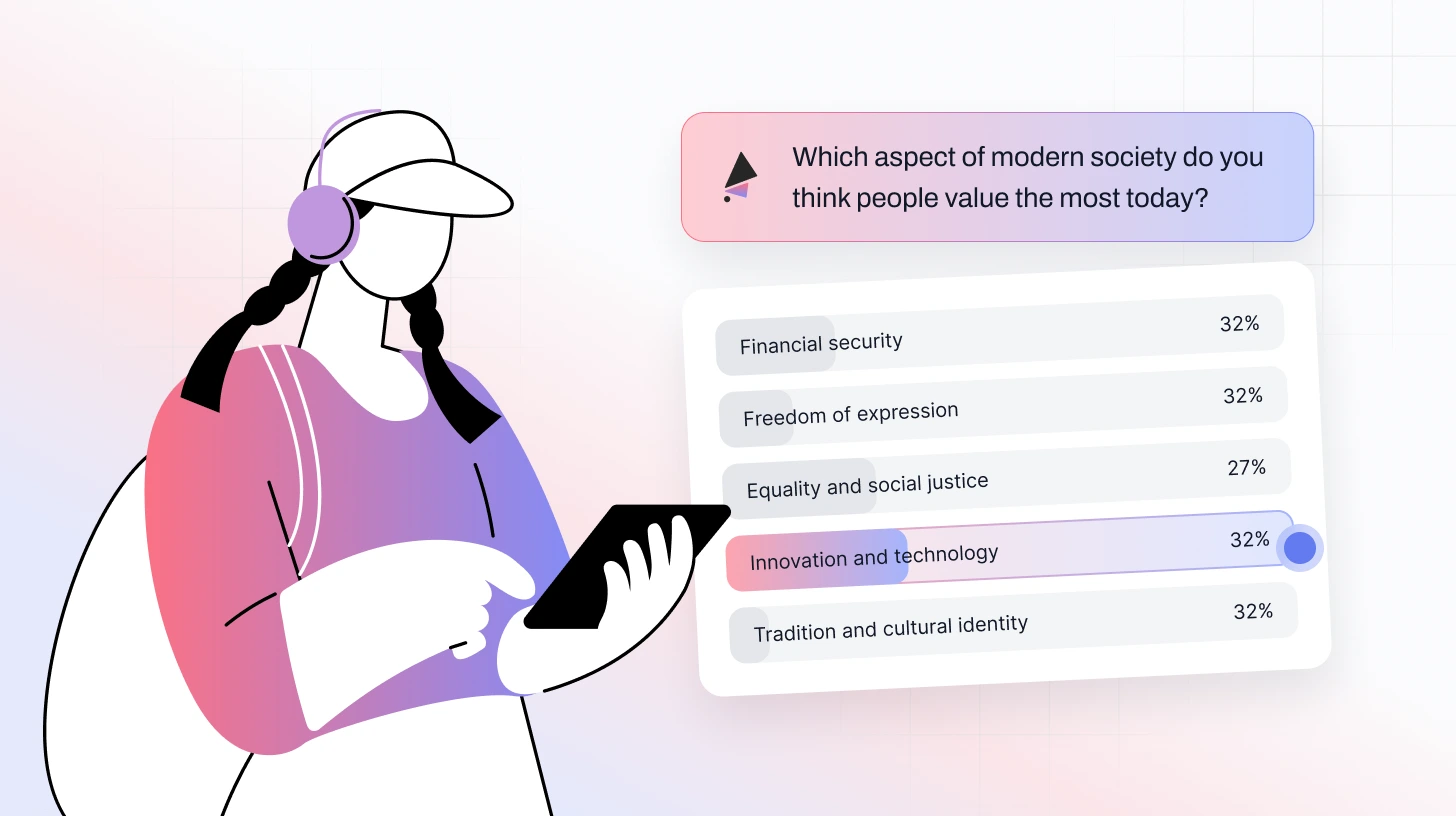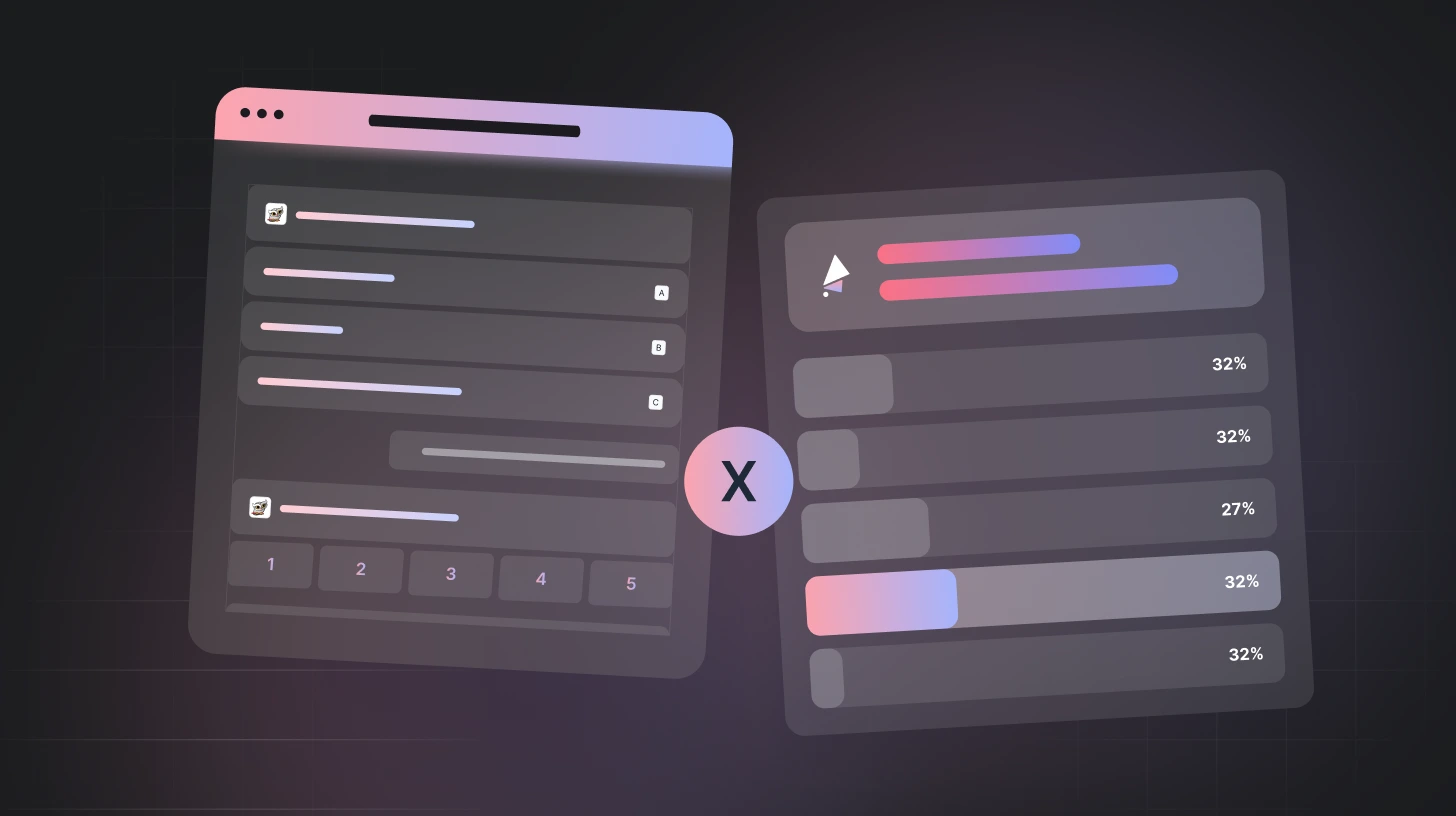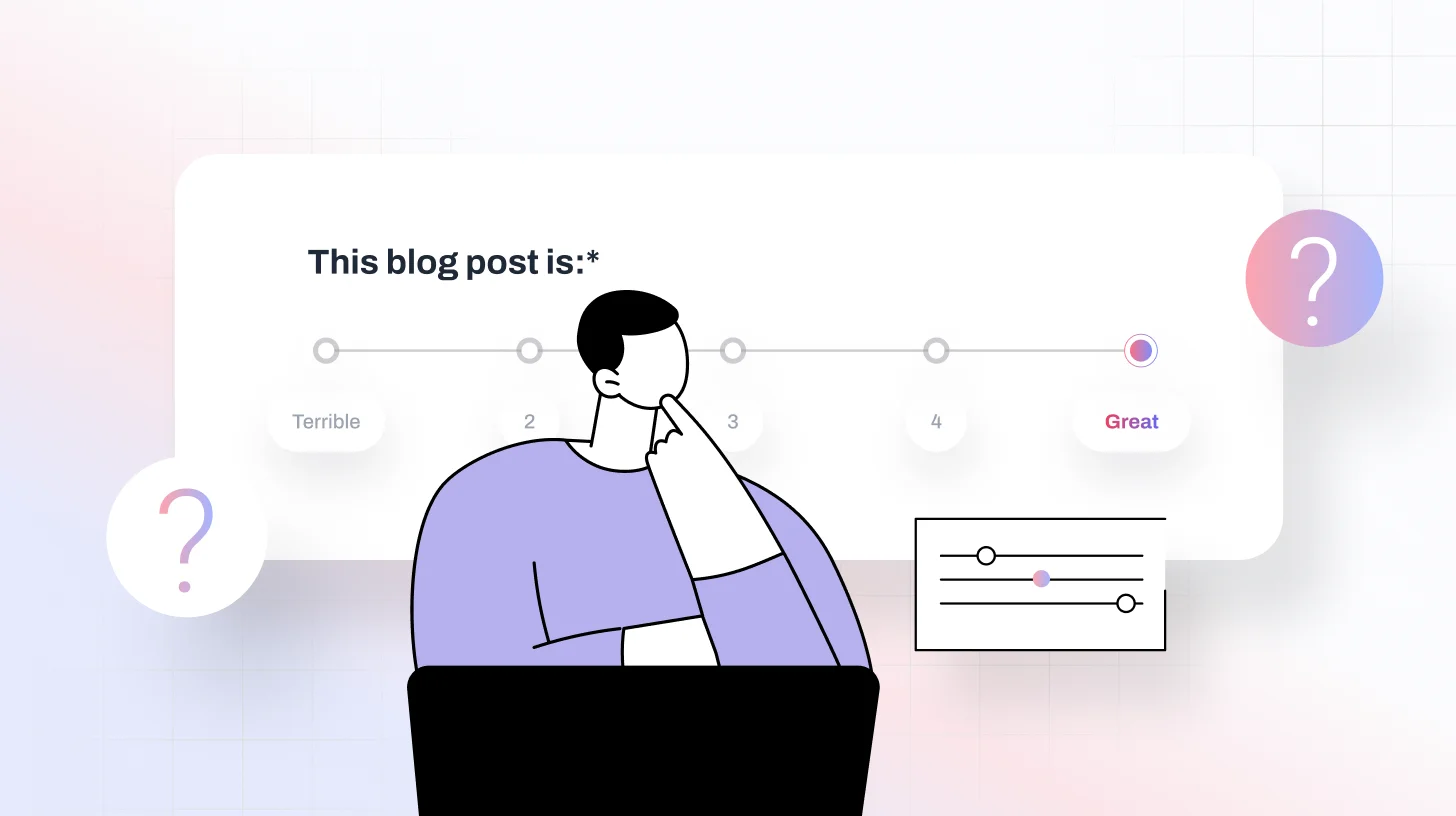 Blog
Blog How Online Polls Transform Decision-Making for Modern B2B Teams
How Online Polls Transform Decision-Making for Modern B2B TeamsHow Online Polls Transform Decision-Making for Modern B2B Teams

Product leaders at B2B companies face a constant challenge. How do you make data-driven decisions when traditional feedback methods take weeks to deliver results?
Online polls solve this problem. They capture real-time insights from your team, customers, and stakeholders in minutes rather than months. Smart companies use these tools to validate product features, test messaging, and gather employee sentiment before major announcements.
Here's what you'll learn: the mechanics behind effective polling, when to choose polls over comprehensive surveys, and how AI-powered platforms like TheySaid make this process seamless for enterprise teams.
What Are Online Polls?
An online poll presents one focused question to a specific audience through digital channels. Think of it as a quick temperature check rather than a comprehensive health examination.
B2B organizations use these tools to test ideas rapidly. A product manager might ask "Which feature should we prioritize next?" before sprint planning. A marketing director could gauge interest in a new messaging angle before committing budget to campaigns.
The format stays simple by design. One question. Multiple response options. Instant results that teams can act on immediately.
Online Polls vs Surveys: Understanding the Critical Difference
Many B2B teams confuse polls with surveys, resulting in suboptimal tool selection for their specific needs.
Polls ask one focused question. Surveys ask multiple questions across different topics. This distinction shapes everything from response rates to the depth of data.

Time requirements differ dramatically. Polls take 30 seconds to complete. Surveys require 5-15 minutes of respondent attention. Your busy executives will complete a quick poll about next quarter's priorities, but skip a comprehensive feedback survey.
Data depth varies significantly. Polls provide directional insights for immediate decisions. Surveys generate comprehensive analysis for strategic planning. Use polls when you need quick validation. Choose surveys when you need a detailed understanding.
Response rates reflect this complexity. Internal polls achieve 40-60% completion rates. Detailed surveys typically see 15-25% participation from the same audience.
Budget considerations matter too. Polls cost almost nothing to deploy and analyze. Survey platforms require higher subscription tiers and often need dedicated analysts for meaningful interpretation.
Use both tools strategically rather than forcing one approach for every feedback need.
Why Online Polls Matter for B2B Success
Speed Beats Perfection in Competitive Markets
Your competitors move fast. They launch features, test campaigns, and iterate based on customer feedback while you're still designing comprehensive research studies.
Quick polling helps you match their pace. Research from Harvard Business Review shows that companies making faster decisions outperform competitors by 2x in revenue growth. Launch a poll on Monday morning about a potential product update. Gather 200+ responses by Wednesday. Make decisions and start development by Friday.
Cost-Effective Insight Generation
Traditional market research costs thousands of dollars and requires external consultants. Internal polls cost almost nothing and provide immediate value.
Compare these approaches:
- Focus groups: $15,000-25,000 and 6-8 weeks
- Online polls: $50-200 monthly subscription and instant results
McKinsey research demonstrates that organizations that reduce feedback collection costs by 60% while maintaining data quality achieve better ROI on customer insights.
The math makes sense for lean teams operating under tight budgets.
Higher Response Rates Drive Better Data
People complete short polls at 3x the rate of lengthy surveys. Your employees, customers, and stakeholders appreciate quick interactions that respect their time.
One question gets answered. Ten questions get ignored or abandoned halfway through.
Real-Time Decision Support
Board meetings happen monthly. Product decisions need daily input. Online polls bridge this gap by providing continuous feedback loops that inform ongoing operations.
Common Use Cases Across B2B Functions
Product Development Teams
Product managers poll internal teams before feature prioritization meetings. "Should we focus on mobile optimization or API improvements?" generates clear direction from engineering, sales, and customer success teams.
Customer advisory boards respond to feature concept polls between quarterly meetings. This maintains engagement while gathering input on development roadmaps.
Marketing Organizations
Campaign messaging tests through employee polls before external launch. Internal teams spot confusing language or unclear value propositions that external audiences might miss.
Event planning becomes more efficient when attendee polls determine session topics, speaker preferences, and scheduling options.
Sales Leadership
Territory managers poll their teams about competitive positioning challenges. "What objection do you hear most often?" provides coaching priorities for upcoming training sessions.
Customer sentiment polls during renewal conversations identify at-risk accounts early in the cycle.
HR and People Operations
Pulse polls replace annual engagement surveys for many organizations. Monthly or quarterly check-ins capture employee sentiment before issues escalate.
Change management initiatives benefit from regular polling. Teams adapting to new processes provide feedback that guides training and support efforts.

Creating Effective Online Polls: A Step-by-Step Framework
Step 1: Define Your Decision Point
Start with the specific decision you need to make. Vague questions generate useless data.
Poor example: "How do you feel about our product?"
Strong example: "Which payment method should we add first: Apple Pay or PayPal?"
Step 2: Identify Your Target Audience
Different stakeholders provide different perspectives. Customer-facing teams understand user needs. Engineering teams know technical constraints. Choose respondents based on their relevant expertise.
Step 3: Craft Clear Response Options
Avoid overlapping choices that confuse respondents. Each option should represent a distinct path forward.
Include "Other" with text input when you suspect missing options. This prevents forced choices that skew results.
Step 4: Set Distribution Strategy
Email works for internal teams. Embedded website widgets capture customer input. Social media reaches broader audiences for brand-related questions.
Match distribution channels to your target respondents' preferred communication methods.
Step 5: Define Success Metrics
How many responses do you need for confident decision-making? Set minimum thresholds before launching to avoid premature conclusions from small sample sizes.
Step 6: Analyze and Act Quickly
Poll results lose value when teams delay action. Plan your decision-making process before launching to maintain momentum.
Best Practices That Maximize Response Quality
Keep Questions Neutral and Unbiased
Leading questions produce misleading results. "Don't you think our new feature is amazing?" tells you nothing useful about actual user preferences.
Neutral phrasing: "How would you rate the usefulness of our new feature?" with scale options provides actionable feedback.
Respect Respondent Time
Single questions get completed. Multiple questions create abandonment. Save complex topics for full surveys and use polls for focused decisions.
Provide Context When Necessary
Stakeholders need enough background to make informed choices. Brief context paragraphs help respondents understand the implications of their selections.
Test with Small Groups First
Internal teams can identify confusing language or missing response options before external launch. This prevents wasted responses and ensures clear data collection.
Share Results with Participants
People who contribute input appreciate seeing outcomes. Result sharing encourages future participation and builds trust in the feedback process.
Common Mistakes That Undermine Poll Effectiveness
Asking Multiple Questions in One Poll
Each additional question reduces completion rates. Focus on one decision at a time for maximum response quality.
Using Technical Jargon Without Explanation
Respondents outside your department might not understand industry terminology. Simple language generates better participation across diverse audiences.
Ignoring Mobile Experience
Many respondents access polls through smartphones. Test mobile display and interaction before launching to broader groups.
Setting Unrealistic Timeframes
Rushed polls with 24-hour deadlines exclude busy stakeholders who could provide valuable input. Allow sufficient time for thoughtful responses.
Over-Analyzing Simple Results
Sometimes, clear winners emerge from poll data. An extended analysis of obvious outcomes delays necessary action and reduces organizational agility.
How TheySaid Amplifies Online Poll Impact
Traditional polling platforms offer basic functionality. TheySaid's AI-powered approach transforms simple polls into strategic intelligence tools.
Our platform analyzes response patterns to identify sentiment trends beyond surface-level answers. When employees choose "Option A" in a feature priority poll, our AI examines their response history to predict implementation challenges or support requirements.
Robust segmentation reveals how different departments or customer segments respond to identical questions. This granular insight helps product teams understand varying needs across user groups.
Automated follow-up suggestions guide next steps based on poll outcomes. Instead of wondering "what now?" after collecting responses, teams receive actionable recommendations for turning insights into decisions.
Key Takeaways
- Online polls deliver rapid insights that support agile decision-making in competitive B2B environments
- Single-question formats maximize response rates while providing focused feedback on specific choices
- Strategic polling across product, marketing, sales, and HR functions improves organizational alignment
- Clear question design and neutral language produce more reliable results than biased or complex polling approaches
- AI-enhanced platforms like TheySaid transform basic polling into comprehensive intelligence gathering
Modern B2B teams need speed and accuracy in their feedback collection. Online polls provide both when implemented thoughtfully. Combine rapid polling with comprehensive survey strategies to maintain competitive advantages through better decision-making.
Frequently Asked Questions
What's the difference between online polls and surveys for B2B teams?
Online polls focus on single decisions with one question and multiple-choice answers. Surveys gather comprehensive feedback through multiple questions across various topics. B2B teams use polls for quick decisions like feature prioritization or messaging tests, while surveys work better for detailed customer satisfaction or employee engagement studies. Choose polls when you need fast input on specific choices.
How many responses do you need for reliable online poll results?
Most B2B decisions benefit from 50-100 responses for internal polls and 200+ responses for customer-facing polls. The key factor is representation across relevant stakeholder groups rather than total volume. A product priority poll needs input from engineering, sales, and customer success teams. Missing any group reduces the reliability regardless of the total response count.
Can online polls replace traditional market research for product decisions?
Online polls complement but don't replace comprehensive market research. Use polls for rapid validation of concepts, feature prioritization, or messaging tests. Complex market analysis, competitive positioning studies, and detailed customer journey mapping still require traditional research methods.
What response rate should B2B teams expect from internal online polls?
Internal polls typically achieve 40-60% response rates when properly designed and distributed. Factors affecting participation include question relevance, leadership endorsement, and result-sharing practices. Single questions with clear business impact generate higher engagement than lengthy or abstract polls. Regular pulse polling maintains engagement better than sporadic requests for input.
How do you prevent bias in online poll questions for business decisions?
Start with neutral language that doesn't favor specific outcomes. Avoid leading phrases like "Don't you think..." or loaded terms that suggest preferred answers. Test questions with colleagues before broader distribution to identify potential bias. Provide balanced response options that represent genuine alternatives rather than obvious choices alongside poor options. Consider demographic factors that might influence responses and segment results accordingly.















.svg)